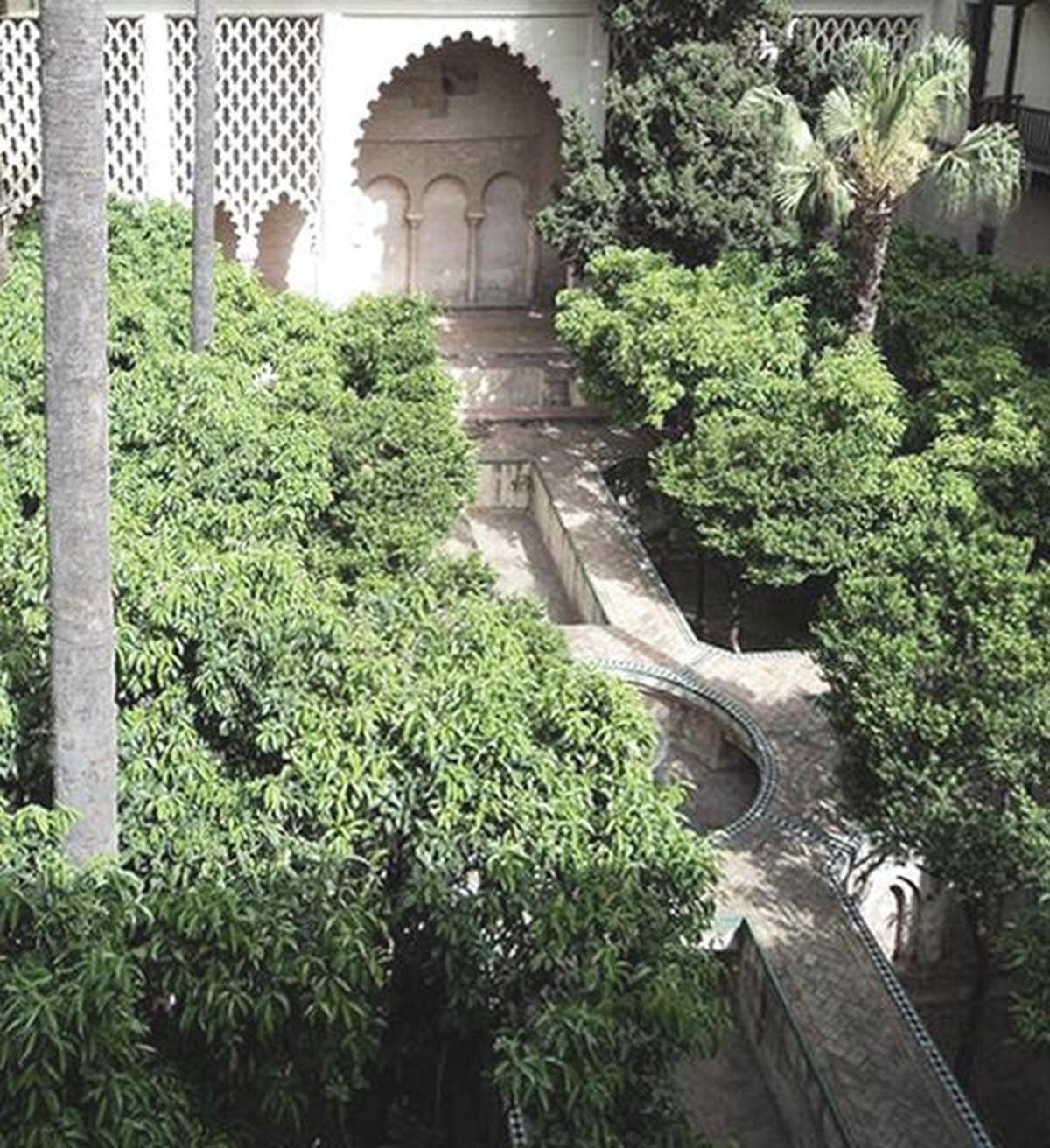Hoy inaccesible desde el Alcázar se encuentra el llamado Jardín de la Contratación, cuyo origen se halla en los días del Alcázar de la Bendición del rey-poeta al-Mutamid. Este misterioso jardín responde al tipo de crucero en dos niveles: arriba, dos andenes perpendiculares se cruzan en el centro; abajo, cuatro parterres contienen la vegetación. Circunscribiéndolo, se sitúa un andén perimetral y dos fachadas enfrentadas con paños de sebka. Estudios del polen depositado han concluido la existencia de frutales en estos jardines a lo largo de diversos períodos de ocupación. En la actualidad se encuentra formado por naranjos amargos, naranjos morunos y palmeras washingtonianas sembradas de manera simétrica.
